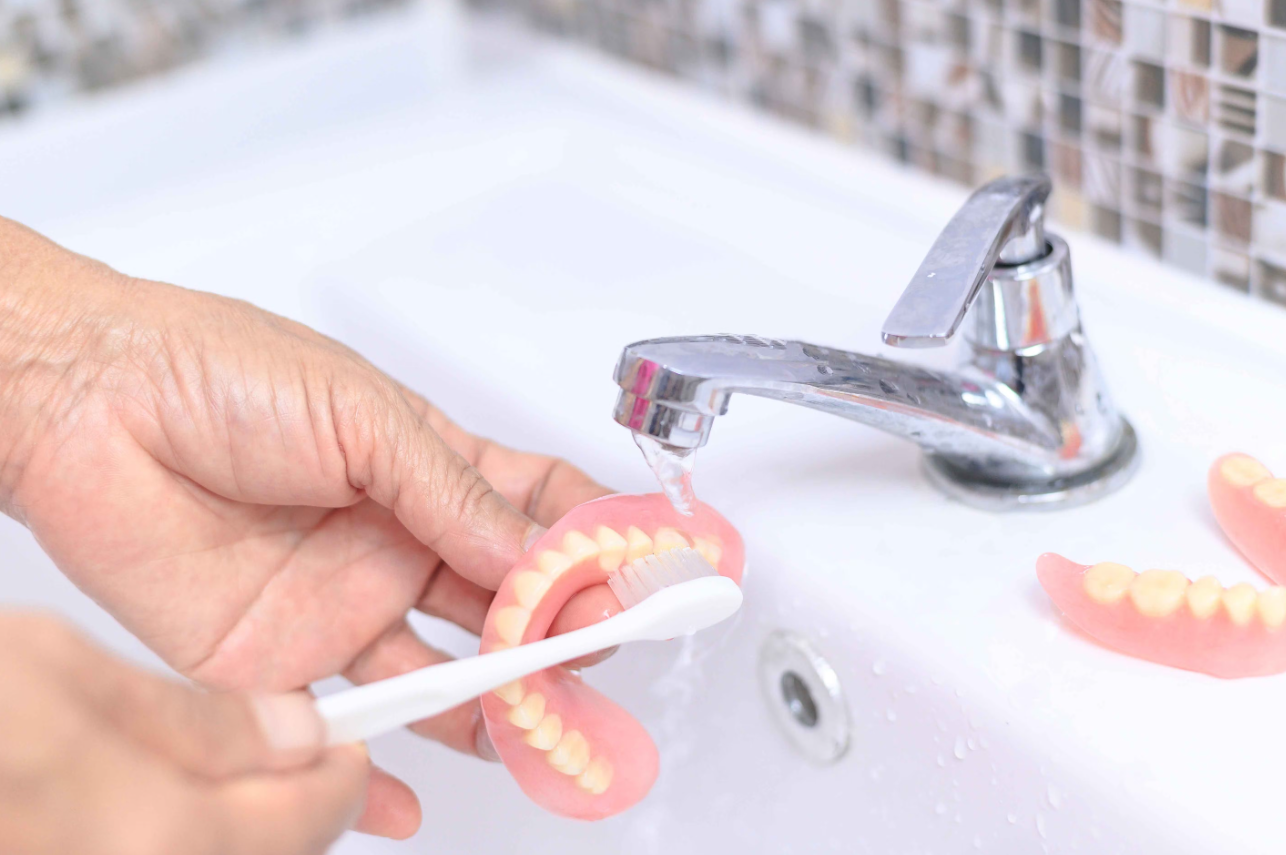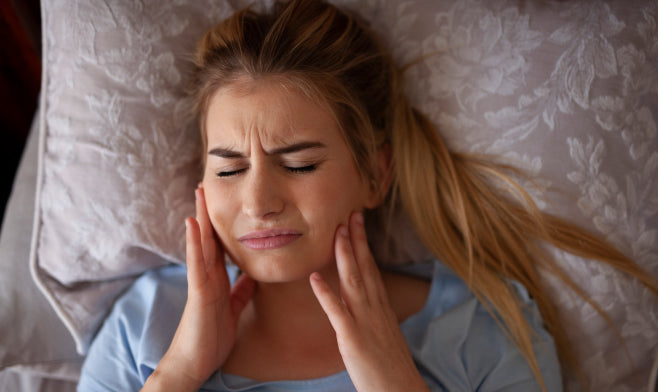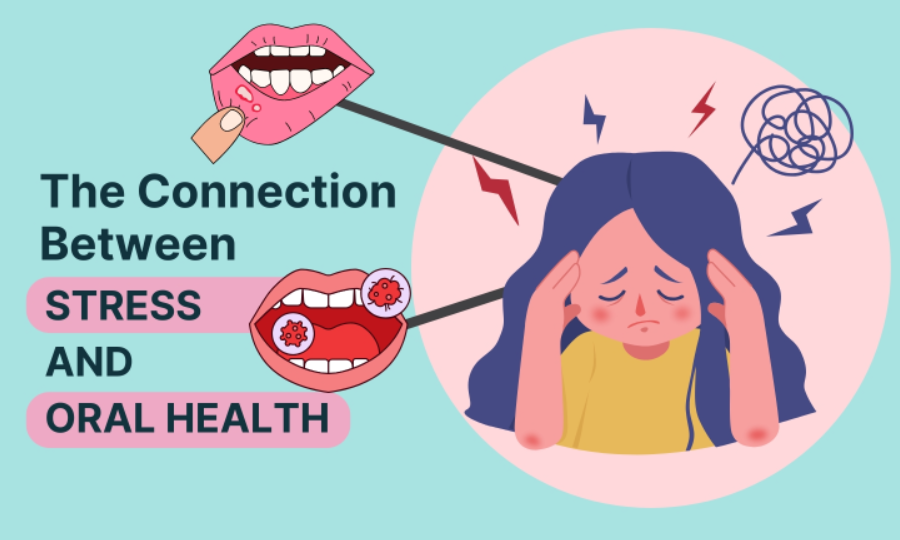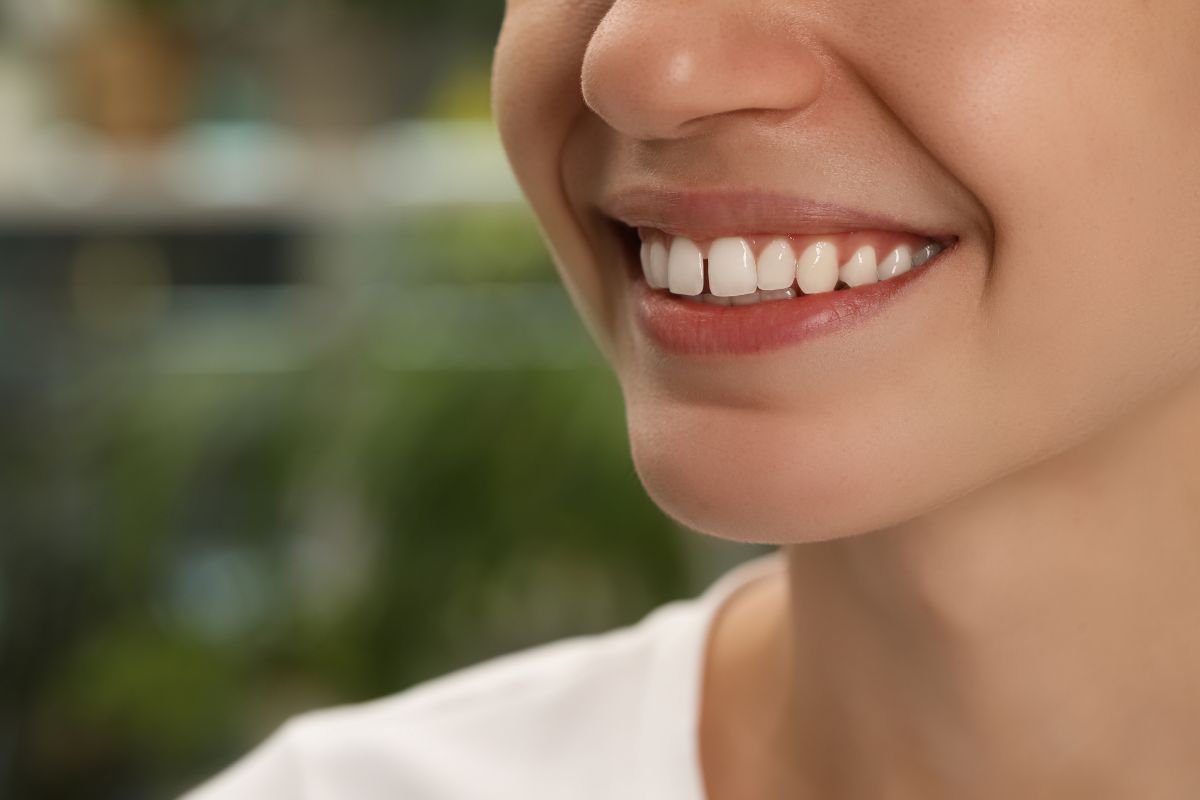If you are reading this, you have likely experienced that strange and sticky feeling on your gums even after your dentures were out. Perhaps you brushed, rinsed, and even swished with mouthwash but something just stubbornly sticks to your gums. That something is denture adhesive, and when you are using Polident, or some such, it is not as rare as you imagine.
This is a guide aimed to help anyone who is in a problem with such annoying residue and who would want to know how to remove polident from gums securely, efficiently, and without destroying the delicate oral tissues.
Now - residual adhesive can not only irritate your gums, but serve as a breeding ground to bacteria and even pre-triggering inflammation or minor infections when neglected. In the long run, it will undermine your oral condition and tooth placement, making what is meant to make your life more comfortable a thing that causes pain daily.
On the positive side, it is easy to remove it once you know the appropriate methods and instruments. And you can preserve your gums, stay on top of your dentures and prevent avoidable future dental problems with some regular maintenance.
Let’s talk about removing politident from the gums, in depth.
What is Polident And Why Does It Stick So Well?
It is worth knowing why denture adhesive is so persistent before learning how to remove polident from gums. The purpose of polident and other denture adhesives is to form a snug bond between your denture and gum tissue. They create a thin cushion-like layer which allows no slippage, and increases the bite pressure and makes the day more comfortable.
But this is not a water soluble adhesive. It is fabricated to resist saliva, food contact, and movement, meaning that it will not be washed away when you rinse. And that is great when it comes to stability, but not so much when you need to take your dentures out, as the same stickiness that keeps them in place can make the process of doing so a bit more complicated.
This is where proper removal techniques become essential.
Why Proper Removal Matters For Oral Health
A sticky nuisance is not the only problem with residual denture adhesive. It may lead to:
Gum irritation: Extensive exposure to adhesive may cause inflammation of the sensitive tissues.
Bacterial growth: Adhesive may accumulate food particles and bacterial growth, making you more vulnerable to gingivitis.
Delayed healing: Leftover adhesive can slow down healing in your gums which are already prone.
Weak denture fit: The accumulation of build-up on your gums can alter the way your dentures fit, thereby becoming uncomfortable.
Understanding how to remove polident from gums properly isn’t just about cleanliness, it’s about protecting your long-term oral health.
Step-by-Step: How to Remove Polident From Gums Safely
Let’s go straight into the process. This is the most effective method I recommend as a dental professional.
Step 1: Start with a Warm Water Rinse
Begin by rinsing your mouth thoroughly with lukewarm water. This softens the adhesive, loosening its bond with your gum tissue. Avoid hot water because excessive heat can irritate soft tissue.
Step 2: Use a Soft-Bristled Toothbrush
Take a soft-bristled toothbrush and gently brush your gums in circular motions. This helps lift and dislodge softened adhesive without causing trauma.
A lot of people wonder if brushing alone removes denture adhesive from gums? Well, brushing helps, but it usually isn’t enough on its own. It’s best used alongside other removal methods.
Step 3: Use Gauze or a Damp Cloth
Moisten a piece of gauze or a soft washcloth and gently wipe along your gums, cheeks, and palate. This helps collect any remaining adhesive particles that brushing may have missed.
Step 4: Oil-Based Adhesive Removal
For stubborn residue, apply a small amount of natural oil, such as coconut oil or olive oil to your gums. Let it sit for a minute, then wipe it away with gauze. Oils help dissolve and loosen adhesive without irritating tissue.
And, if you’re wondering what dissolves polident, know that there’s no specific “solvent,” natural oils are among the safest and most effective ways to break down denture adhesives.
Step 5: Final Rinse and Oral Care
Finish by rinsing with warm water or a mild saltwater solution. This not only removes any lingering residue but also soothes your gums and reduces bacterial load.
Some Common Mistakes You Should Avoid When Cleaning Adhesive

Using the Wrong Tools or Techniques
One of the most frequent mistakes people make when trying to figure out how to remove polident from gums is going straight in with hard tools or overly abrasive brushes. While it might seem logical that a stiff brush or even a toothpick could “scrape” away leftover adhesive, this approach almost always causes more harm than good.
The gum tissue is delicate, and anything sharp or overly firm can create tiny abrasions that later become entry points for bacteria. Instead, opt for soft-bristled toothbrushes and gentle circular motions. If the adhesive feels stubborn, soak your dentures in warm water first - this softens the material and makes it easier to remove without aggressive scrubbing.
Skipping a Rinse Before Brushing
Another overlooked misstep is brushing your gums while they’re still coated with adhesive residue. When denture cream mixes with saliva and food particles, it can become sticky and resistant, leading to irritation if not properly rinsed away first. Always rinse thoroughly with warm water before brushing - think of it as a “pre-wash” step that loosens the residue.
Relying on Harsh Chemicals
Some people turn to household products like vinegar or hydrogen peroxide in desperation. While these may help dissolve certain residues, they are not designed for daily use inside your mouth and can upset your oral microbiome. Harsh chemicals also risk damaging dentures and leaving behind lingering tastes or sensitivities.
Instead, choose a denture-safe cleanser or a natural oil-based solution formulated specifically for oral care.
Ignoring Gum Health During Cleaning
A big mistake is focusing entirely on the denture adhesive while ignoring the state of your gums. If they’re inflamed, irritated, or already sensitive, removing residue roughly can worsen the condition. In such cases, take a more restorative approach: use a soft brush, rinse with a saltwater solution, and consider adding a soothing natural product like The Goodbye Company Gum Disease oral solution. Its neem and clove oils help calm irritation while cleansing the area; a win-win when dealing with stubborn adhesive and tender tissue.
What Happens If You Don’t Remove Adhesive Properly?
The Risk of Gum Inflammation
Neglecting proper removal isn’t just a cosmetic issue, it can have real consequences for your oral health. When leftover adhesive stays on your gums, it traps bacteria and food debris against your tissue. Over time, this leads to inflammation, tenderness, and even minor infections. These symptoms may start subtly; a little redness, slight swelling, or occasional discomfort, but they can quickly escalate if ignored. Consistent irritation from leftover residue is one of the leading causes of chronic gum inflammation in denture wearers.
Increased Risk of Oral Infections
Improper removal of denture adhesive can also increase your chances of developing more serious oral infections. The adhesive creates a sticky biofilm-like layer where bacteria thrive, particularly in warm, moist environments like the gum line. If bacteria penetrate deeper into gum tissue, they can lead to painful abscesses or even periodontal disease. In severe cases, this can compromise your ability to wear dentures comfortably, cause receding gums, or contribute to tooth loss.
Changes in Oral pH and Microbiome
Another under-discussed consequence is the disruption of your mouth’s natural balance. When adhesive residues linger, they can trap sugars and carbohydrates from your diet, fueling bacterial overgrowth. This imbalance alters your oral pH, encouraging harmful bacteria to multiply while suppressing beneficial ones. Over time, this imbalance may lead to chronic bad breath, plaque buildup, and higher susceptibility to cavities - even if you no longer have natural teeth.
Sensitivity and Long-Term Discomfort
Leftover adhesive can also cause mechanical irritation. As the residue hardens, it can rub against your soft gum tissue every time you chew or speak. This friction leads to tiny micro-tears, which not only hurt but also make your gums more vulnerable to infections. In the long term, repeated irritation can contribute to gum recession or make it difficult to achieve a proper denture fit.
Preventive Solutions
Fortunately, these issues are avoidable. Removing adhesive gently and thoroughly is the most effective way to prevent them. Incorporating an oil-based oral rinse like The Goodbye Company Gum Disease oral solution into your daily routine can further reduce bacterial buildup and soothe irritated tissue. Its omega-3 and omega-9 oils support gum healing while neem and clove help combat microbial overgrowth, creating a healthier environment overall.
Natural Ingredients That Help Remove Residue
For those seeking chemical-free methods, several natural ingredients can help loosen and remove adhesive:
|
Ingredient |
Benefit |
How to Use |
|
Coconut oil |
Breaks down adhesive, moisturizes gums |
Apply directly to gums, wait 1 min, wipe away |
|
Olive oil |
Dissolves stubborn residue |
Rub gently with gauze |
|
Saltwater |
Reduces bacteria, soothes gums |
Rinse for 30 seconds |
|
Aloe vera |
Soothes irritation, promotes healing |
Apply directly to inflamed areas |
|
Baking soda paste |
Neutralizes acidity, loosens residue |
Use sparingly, rinse well |
These natural options are safe and effective when incorporated into a daily cleaning routine.
The Role of Good Oral Hygiene After Adhesive Removal
Why Post-Removal Care Matters
Many people believe that once they’ve mastered how to remove polident from gums, their job is done - but that’s far from the truth. The moments after adhesive removal are actually some of the most crucial for maintaining gum health. Your gums are often more sensitive and slightly exposed during this time, which means they’re more vulnerable to bacteria, dryness, and irritation.
Proper hygiene isn’t just about cleanliness here, it’s about creating the right conditions for your oral tissues to recover and remain resilient.
Essential Daily Practices
Start with a gentle rinse using warm salt water or an alcohol-free mouthwash to flush out any lingering debris. Then, brush your gums and tongue lightly with a soft-bristled toothbrush to stimulate circulation and remove residual bacteria. Don’t forget to clean your dentures thoroughly as well - a clean denture base prevents reintroducing adhesive buildup and bacteria into your mouth.
If you use denture tablets or specialized cleansers, make sure they’re free from harsh chemicals that could irritate your tissue.
Strengthening Gums Through Nutrition and Hydration
Your oral hygiene doesn’t stop at brushing and rinsing. Supporting gum tissue health from within is just as important. Staying hydrated helps maintain saliva flow; a key component of your mouth’s natural defense system. While a diet rich in vitamins C and D, calcium, and omega fatty acids supports tissue repair and reduces inflammation. Pairing these habits with regular dental checkups ensures that any subtle issues are caught before they become major concerns.
Incorporating Targeted Gum Care
Finally, this is where a specialized oral care solution can make a significant difference. Incorporating The Goodbye Company Gum Disease oral solution into your daily regimen provides an added layer of protection and nourishment. The formulation’s omega-3 and omega-9 oils, combined with the antimicrobial properties of neem and clove essential oils, don’t just soothe the gums, they actively support healing and prevent microbial buildup after adhesive removal. This makes your gums less prone to sensitivity and irritation, ensuring long-term comfort and oral health.
The Goodbye Company Solution: A Natural Companion For Gum Care

If you want to go beyond basic hygiene and actively support your gum health, I recommend integrating The Goodbye Company Gum Disease oral solution into your routine.
This all-natural formula is infused with Omega-3 and Omega-9 oils, known for their anti-inflammatory and tissue-healing properties. It also contains neem and clove essential oils, both of which have natural antibacterial benefits that help prevent irritation and promote gum healing.
If you’re dealing with persistent sensitivity, bleeding, or discomfort after adhesive removal, using this solution daily can significantly improve your oral environment, making your gums less reactive and more resilient.
FAQs
How do you get denture adhesive off your gums quickly?
The fastest method is a combination of a warm water rinse, gentle brushing, and wiping with gauze. If residue remains, follow up with a small amount of oil.
Can Polident damage gums if not removed?
Yes. Prolonged contact with adhesive can cause inflammation, harbor bacteria, and lead to sore or receding gums over time.
How often should I remove adhesive from my gums?
Every single day. Adhesive should never be left on overnight, as it can dry out, harden, and become more difficult to remove.
What if adhesive won’t come off even after brushing?
Use an oil-based method and give it a few minutes to break down the material. Never scrape or force it off.
When to See a Professional
While most cases of adhesive residue can be managed at home, there are times when a professional opinion is necessary. Contact your dentist if you notice:
-
Persistent redness or swelling that lasts more than a week.
-
Pain that worsens despite proper cleaning.
-
Signs of infection (pus, fever, or severe bad breath).
-
Difficulty wearing dentures even after thorough cleaning.
These symptoms may indicate that the adhesive has triggered an underlying condition requiring professional care.
Building a Long-Term Gum Care Routine
Understanding how to remove polident from gums is just one part of proper oral care. Long-term success depends on daily habits. Here’s a suggested routine:
-
Morning: Remove dentures, rinse with warm water, brush gums gently.
-
Midday: Rinse after meals to prevent food from sticking.
-
Evening: Remove adhesive thoroughly using oil if needed, then apply The Goodbye Company Gum Disease oral solution.
-
Weekly: Inspect gums for signs of irritation and clean dentures thoroughly.
A consistent approach prevents buildup, reduces irritation, and ensures your dentures remain comfortable and effective.
Why Natural Solutions Are the Future of Denture Care
Traditional approaches to denture maintenance often focus solely on mechanical removal - brushing, rinsing, and wiping. While these are essential, modern dental care is shifting toward biological support, addressing the gum environment itself.
That’s why we advocate for integrating natural, oil-based solutions like The Goodbye Company Gum Disease oral solution into your routine. They don’t just remove adhesive; they condition the gum tissue, improve resilience, and reduce the risk of chronic irritation or infection.
Outlook
Too many people treat denture adhesive removal as an afterthought, a quick swipe before bed and nothing more. But as we’ve seen, learning how to remove polident from gums properly is crucial to your oral health. It’s about more than cleanliness; it’s about preserving the integrity of your gum tissue, preventing inflammation, and ensuring your dentures fit comfortably every single day.
By following the steps outlined here; gentle removal techniques, natural remedies, and consistent hygiene, you’re setting the stage for long-term oral wellness. And by adding supportive products like The Goodbye Company Gum Disease oral solution to your daily care, you can give your gums the protection and strength they deserve.
Your dentures are designed to improve your quality of life, but that starts with taking care of the foundation they rely on: your gums.









